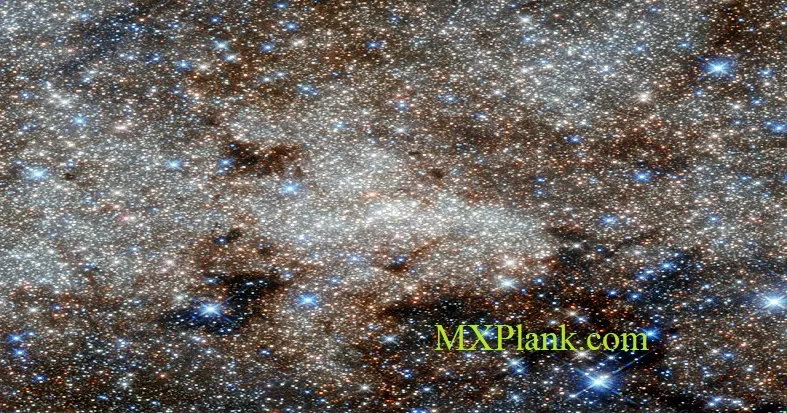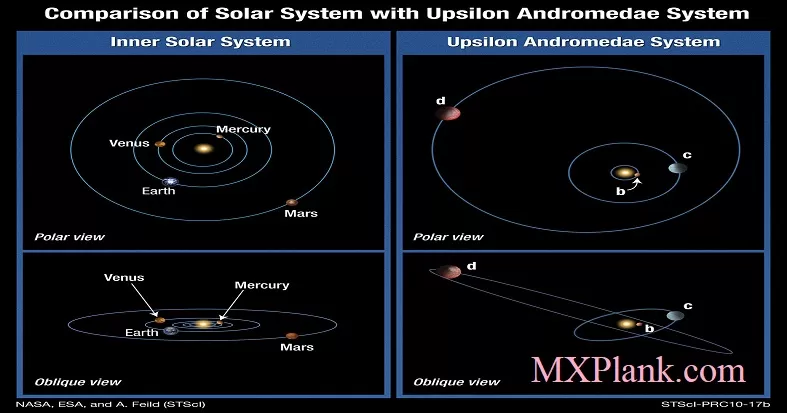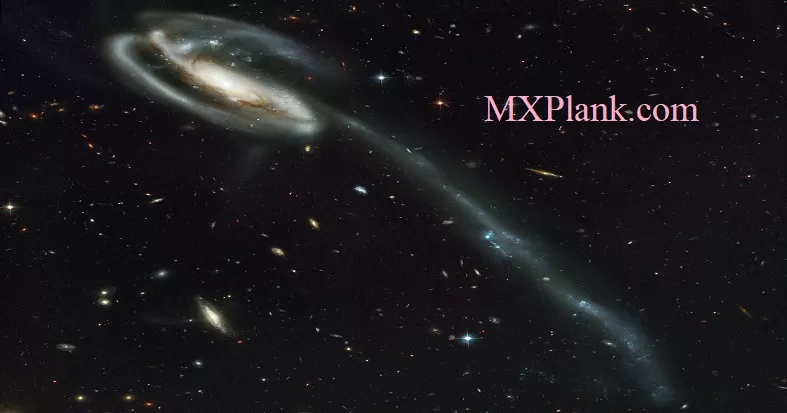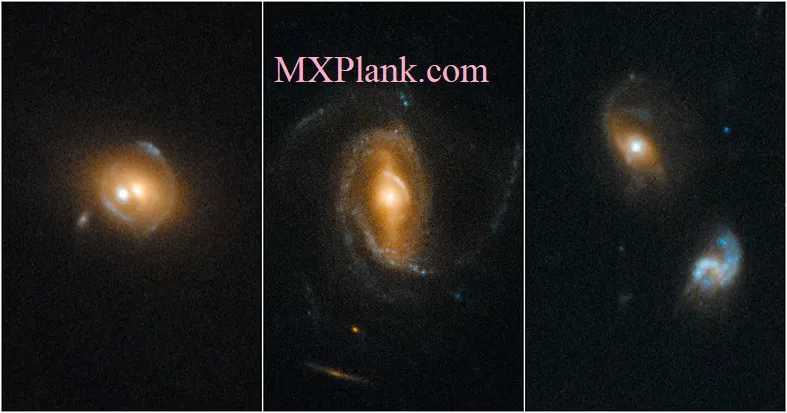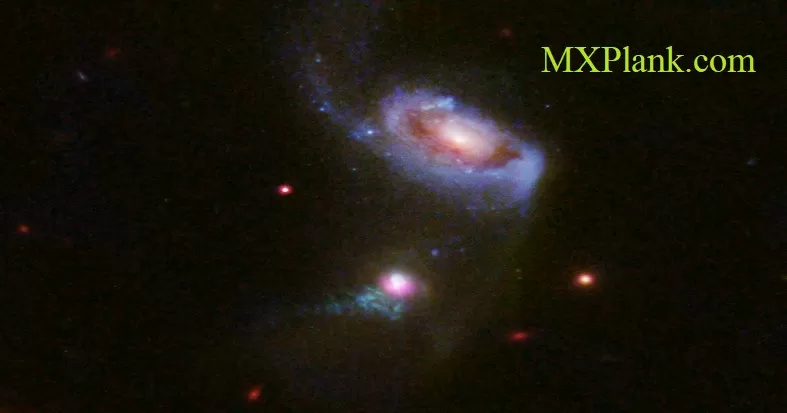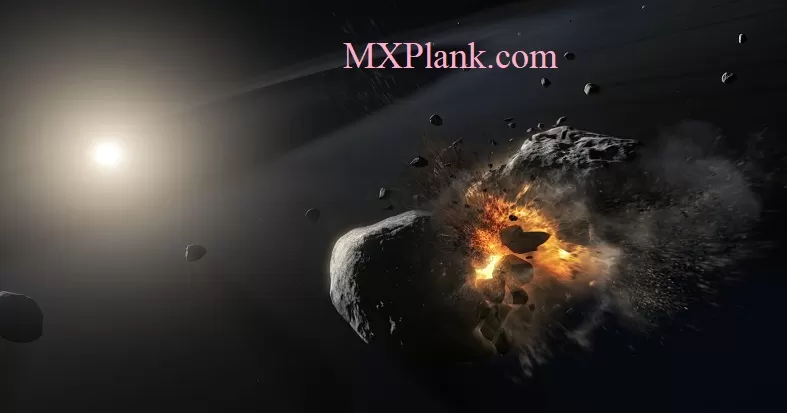HR 8799 Planetary System
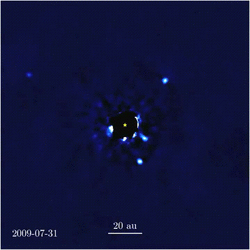
HR 8799 is a roughly 30 million-year-old main-sequence star located 133.3 light-years (40.9 parsecs) away from Earth in the constellation of Pegasus. It has roughly 1.5 times the Sun's mass and 4.9 times its luminosity. It is part of a system that also contains a debris disk and at least four massive planets. Those planets, along with Fomalhaut b, were the first exoplanets whose orbital motion was confirmed by direct imaging. The star is a Gamma Doradus variable: its luminosity changes because of non-radial pulsations of its surface. The star is also classified as a Lambda Bootis star, which means its surface layers are depleted in iron peak elements. It is the only known star which is simultaneously a Gamma Doradus variable, a Lambda Bootis type, and a Vega-like star (a star with excess infrared emission caused by a circumstellar disk).
HR 8799 is a star that is visible to the naked eye. It has a magnitude 5.96 and it is located inside the western edge of the great square of Pegasus almost exactly halfway between Scheat and Markab. The star's name of HR 8799 is its line number in (the revised version of Henry Drapper's) Bright Star Catalogue.
The star HR 8799 is a member of the Lambda Bootis (λ Boo) class, a group of peculiar stars with an unusual lack of "metals" (elements heavier than hydrogen and helium) in their upper atmosphere. Because of this special status, stars like HR 8799 have a very complex spectral type. The luminosity profile of the Balmer lines in the star's spectrum, as well as the star's effective temperature, best match the typical properties of an F0 V star. However, the strength of the calcium II K absorption line and the other metallic lines are more like those of an A5 V star. The star's spectral type is therefore written as kA5 hF0 mA5 V; λ Boo.
Age determination of this star shows some variation based on the method used. Statistically, for stars hosting a debris disk, the luminosity of this star suggests an age of about 20-150 million years. Comparison with stars having similar motion through space gives an age in the range 30-160 million years. Given the star's position on the Hertzsprung-Russell diagram of luminosity versus temperature, it has an estimated age in the range of 30-1,128 million years. λ Bootis stars like this are generally young, with a mean age of a billion years. More accurately, asteroseismology also suggests an age of approximately a billion years. However, this is disputed because it would make the planets become brown dwarfs to fit into the cooling models. Brown dwarfs would not be stable in such a configuration. The best accepted value for an age of HR 8799 is 30 million years, consistent with being a member of the Columba association co-moving group of stars.
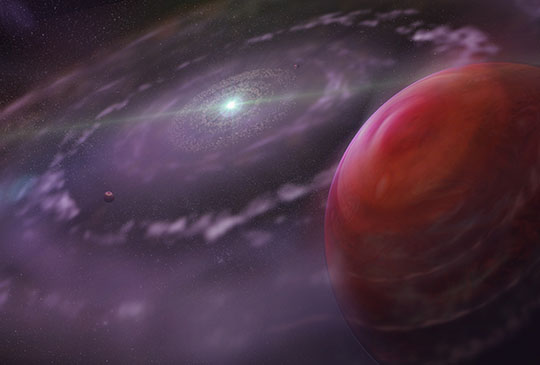 Artist's rendering of the planetary system HR 8799 at an early stage of its evolution, showing the planet HR879cc, a disk of gas and dust, and interior planets.
Artist's rendering of the planetary system HR 8799 at an early stage of its evolution, showing the planet HR879cc, a disk of gas and dust, and interior planets.
Earlier analysis of the star's spectrum reveals that it has a slight overabundance of carbon and oxygen compared to the Sun (by approximately 30% and 10% respectively). While some Lambda Bootis stars have sulfur abundances similar to that of the Sun, this is not the case for HR 8799; the sulfur abundance is only around 35% of the solar level. The star is also poor in elements heavier than sodium: for example, the iron abundance is only 28% of the solar iron abundance. Asteroseismic observations of other pulsating Lambda Bootis stars suggest that the peculiar abundance patterns of these stars are confined to the surface only: the bulk composition is likely more normal. This may indicate that the observed element abundances are the result of the accretion of metal-poor gas from the environment around the star.
In 2020, spectral analysis utilizing multiple data sources have detected an inconsistency in prior data and concluded the star carbon and oxygen abundances are the same or slightly higher than solar. The iron abundance was updated to 30+6 -5% of solar value.
Astroseismic analysis using spectroscopic data indicates that the rotational inclination of the star is constrained to be greater than or approximately equal to 40°. This contrasts with the planets' orbital inclinations, which are in roughly the same plane at an angle of about 20° ± 10°. Hence, there may be an unexplained misalignment between the rotation of the star and the orbits of its planets. Observation of this star with the Chandra X-ray Observatory indicates that it has a weak level of magnetic activity, but the X-ray activity is much higher than that of an A-type star like Altair. This suggests that the internal structure of the star more closely resembles that of an F0 star. The temperature of the stellar corona is about 3.0 million K.
Credit:
NASA/ESA and The Hubble Heritage Team (STScI/AURA)
NASA/ESA and The Hubble Heritage Team (STScI/AURA)

